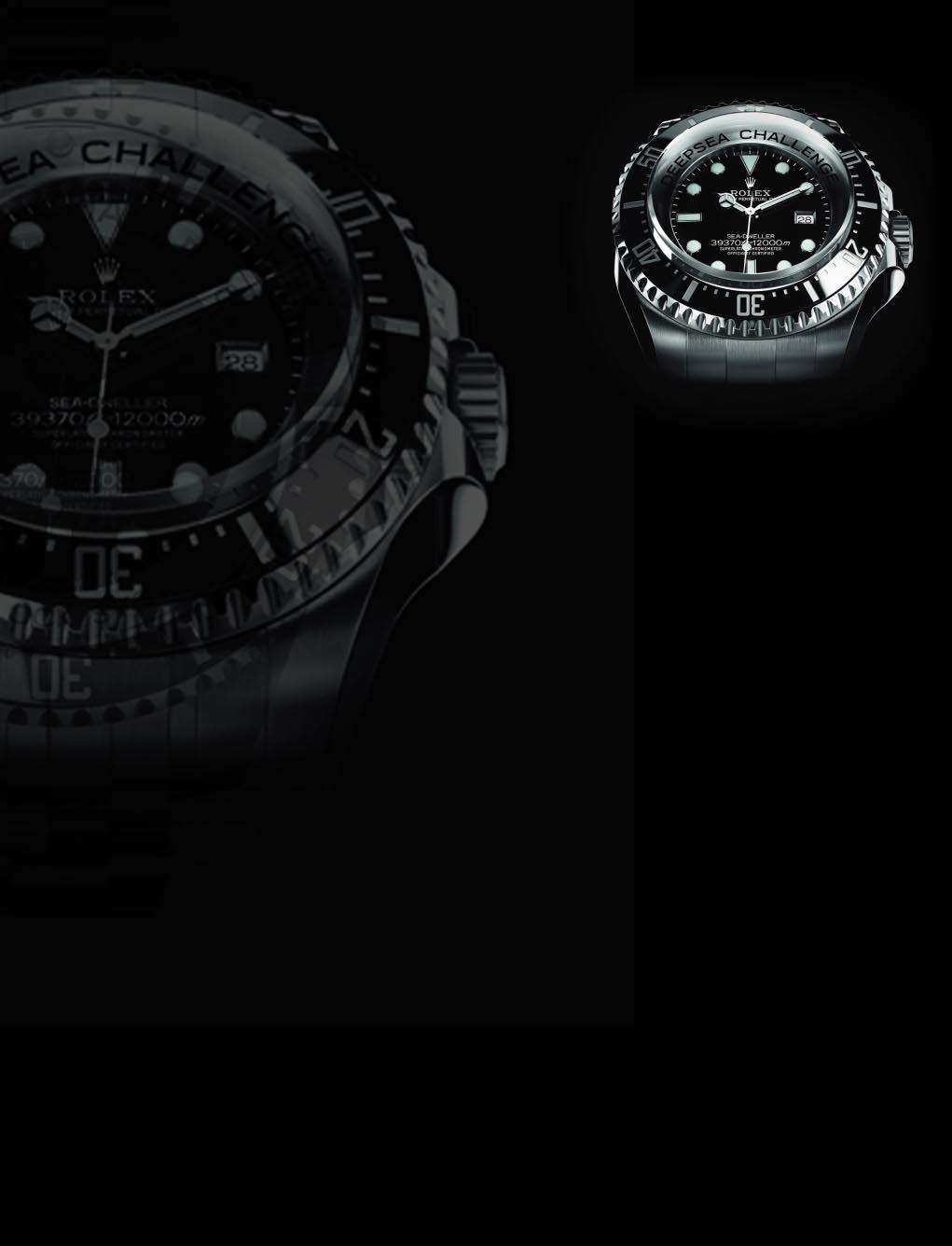
5 minute read
The Mastery of Rolex
the mastery of
Complex construction and new technology ensure the makers of the Oyster Perpetual stay on top Rolex
Advertisement
Rolex’s reputation as the world’s number-one watch brand is based on a solid foundation of
performance and innovation. The brand has pioneered some of the most important develop-
ments in watchmaking, including the introduction of the Oyster, the world’s first water-resistant
watch in 1926, and the Perpetual rotor self-winding mechanism, which Rolex developed in
1931. The company has filed more than 400 patents in the course of its history.
Top: The Rolex Deepsea Challenge. Bottom: James Cameron descends into the Marianna Trench with a Rolex strapped to the outside of his submersible.

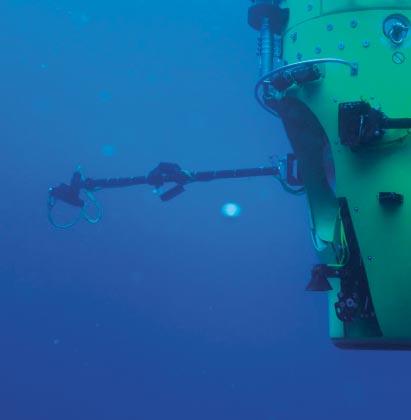
Rolex Sky-Dweller.
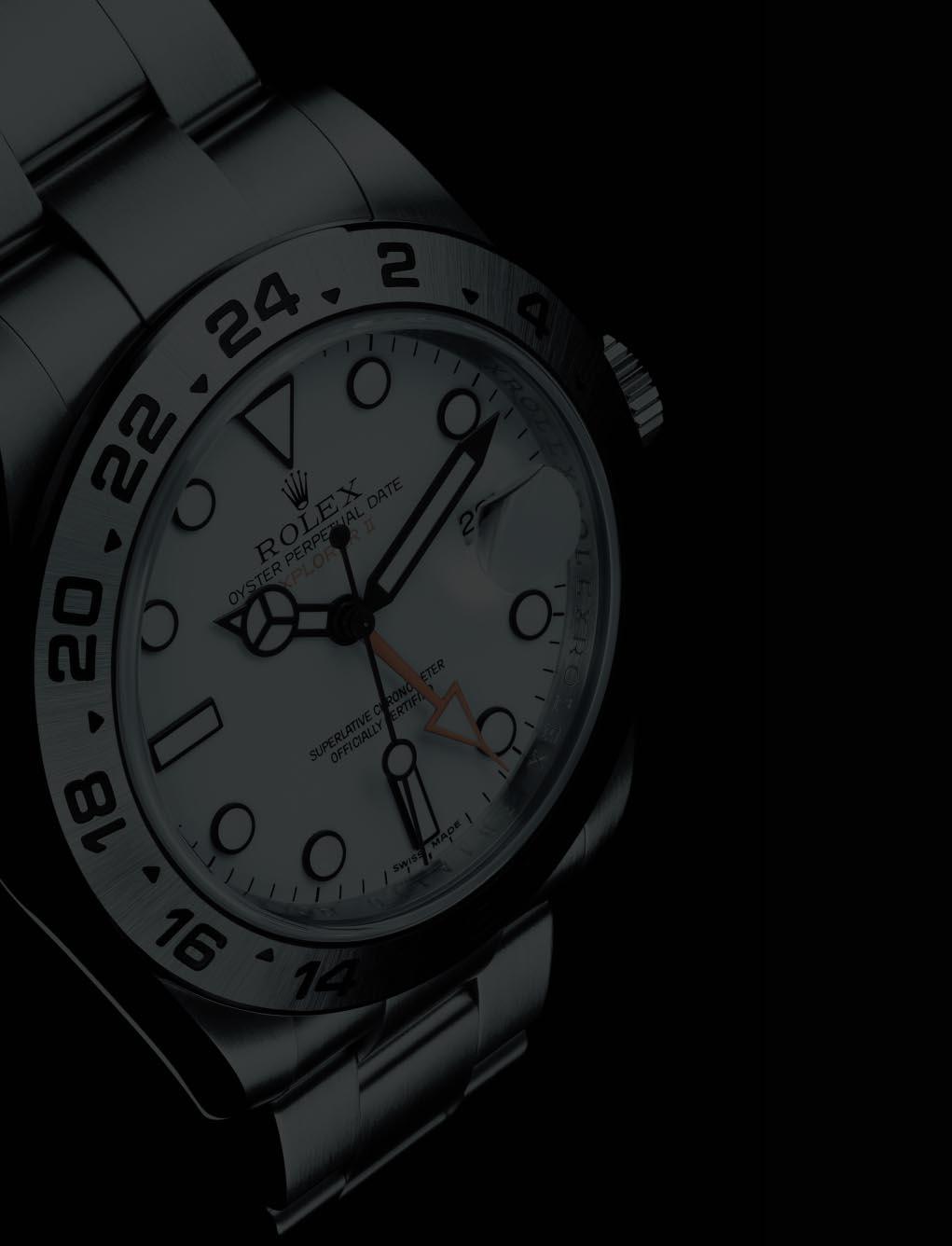

Some of those patents are connected to the company’s dedication to water-resistance even in the deepest depths of the ocean. Earlier this year, filmmaker and ocean explorer James Cameron took a Rolex along with him when he touched down at the deepest point in the world’s oceans – about 11,000 meters (36,100 feet) (seven miles) – in the Mariana Trench. True to its passion for underwater exploration, Rolex took an active part in the expedition, in partnership with National Geographic. The brand attached an experimental watch to the outside of the one-man submarine, on the manipulator arm, while Cameron himself wore a Rolex Deepsea. Both watches and Cameron emerged unscathed. It was the first attempt in 52 years to reach the Challenger Deep, the deepest point of the Mariana Trench, southwest of the island of Guam; Swiss oceanographer Jacques Piccard and U.S. Navy lieutenant Don Walsh touched bottom in January 1960 in a submersible. Rolex tested a watch on that dive too, which descended to 10,916 meters.
The experimental watch, the Rolex Deepsea Challenge, is 51.4mm in diameter and 28.5mm thick, and was engineered with Rolex’s patented three-piece Ringlock case architecture, anchored by a nitrogen-alloyed stainless-steel support ring. The ring is placed inside the middle case made of 904L stainless steel, a super-alloy, and supports a 14.3mm thick domed sapphire crystal made of high-purity aluminum oxide, as well as a 5.3mm screw-down case back made of grade-five titanium. The Rolex Deepsea Challenge is an experimental version of the Rolex Deepsea. It embodies the heritage and technical and watchmaking know-how accumulated by the brand, notably with its diving watches. They include the iconic Submariner, which was introduced in 1953 with a depth rating of 200 meters (660ft) and the Sea-Dweller, which was unveiled in 1967 with a depth rating of 610 meters (2,000 feet). In 2008, the Rolex Deepsea was introduced with an even greater depth rating of 3,900 meters (12,800 feet).
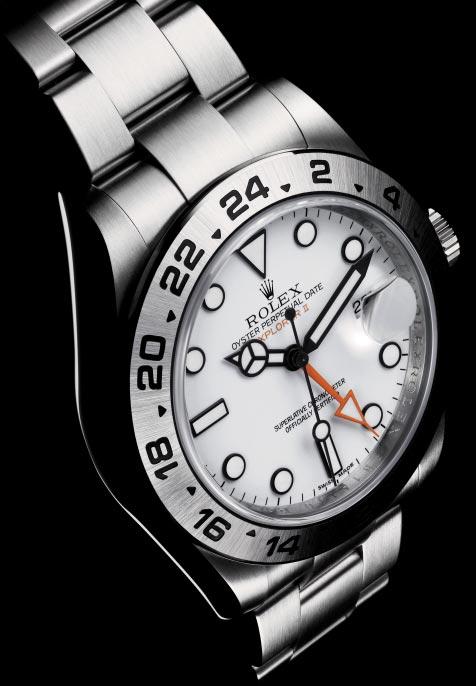

The Rolex Oyster Perpetual Explorer II.
As a maker of all its own movements, Rolex has also been at the forefront of advances in component technology. Most of its watches are now fitted with Parachrom hairsprings, which are 10-times more precise than a traditional hairspring. The new SkyDweller, with 14 patents, is another example of Rolex innovation and is the latest addition to the Rolex Oyster Perpetual collection. It contains a new movement, caliber 9001, with a high-tech Parachrom hairspring and Paraflex shock absorbers, and features a dual time zone. Local time is indicated via the center hands and a 24-hour track read on a rotating offcenter disc indicates the reference time in a second time zone. The hour can be set either forwards or backwards. Changing the local time does not affect the minute and seconds hands, or the reference time. The watch is also an annual calendar, with a date indication that requires only one adjustment per year – when the month changes from February to March. The month is displayed by means of 12 discreet apertures placed just above each numeral. Local time, reference time and date functions are selected using the bezel, which is engineered with the Rolex Ring Command adjustment system. The heart of this mechanism is a double cam and levers that engage various gear trains inside the movement. The date is linked to local time and changes within a few milliseconds at midnight.
Case components represent another area of innovation for Rolex. The Cosmograph Daytona, for example, is available in Everose gold with a Cerachrom bezel made from a tough, corrosionresistant and high-tech ceramic that is developed inhouse by Rolex. The hour markers on the bezel are created using a special PVD process whereby magnetron sputtering is used to deposit a fine layer of rose gold. In fact, the company also alloys its own gold. Yellow, white or Everose gold are then stamped and machined into cases at the Rolex manufacture in Switzerland and used to make bracelets.
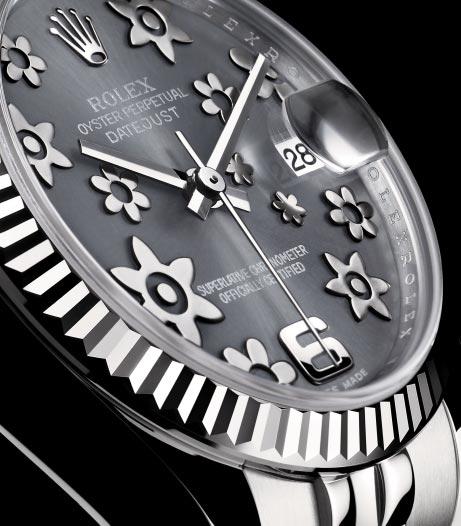
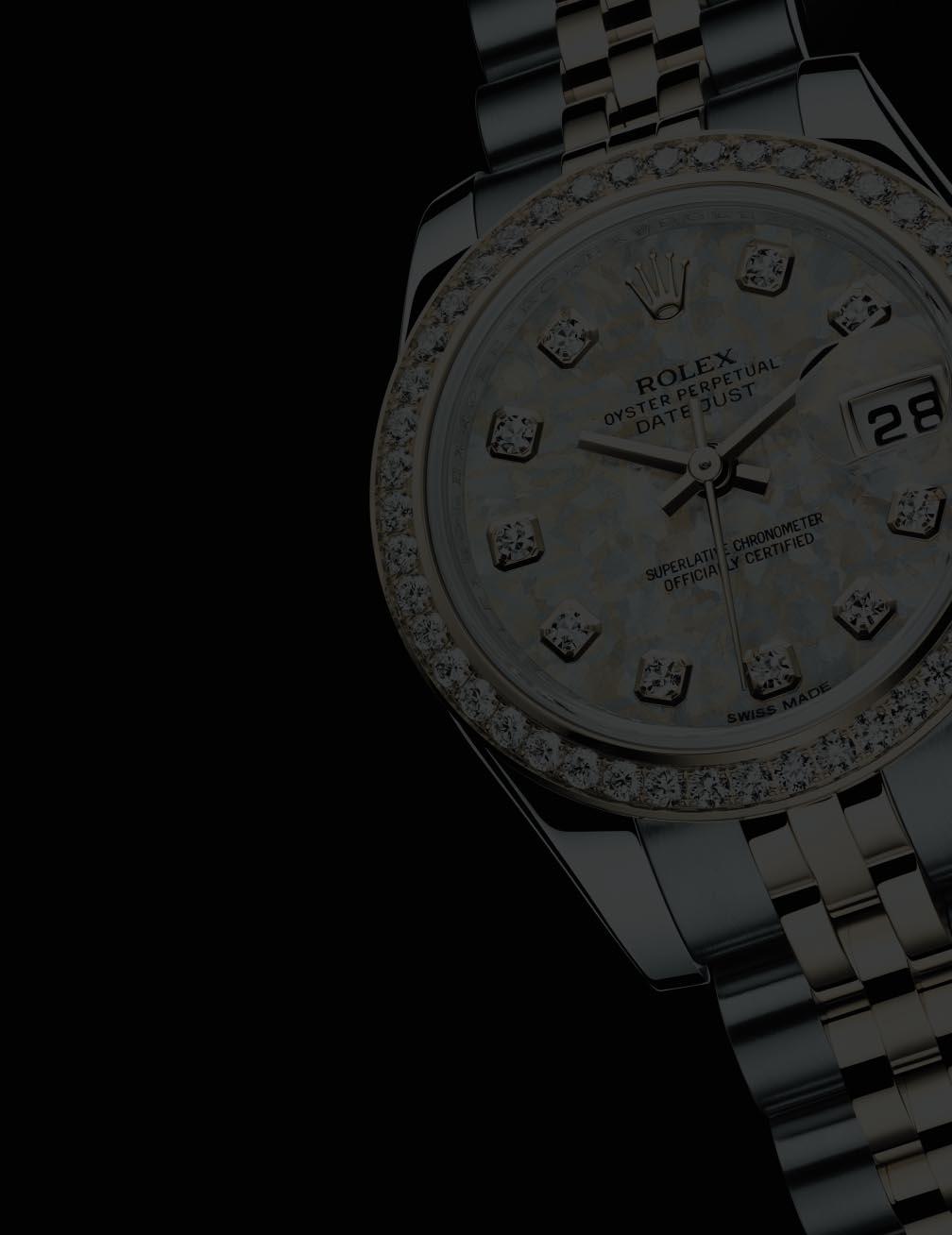
Rolex has not forgotten the ladies in this flourish of innovation. The company’s Datejust collection, in both the 26mm and 31mm size, offers a shimmering “Gold Crystals” dial, created using a proprietary technique in which a gold dial is chemically treated to reveal its natural crystal structure. Other models in the collection feature applied floral motifs produced using a patented electroforming technique involving a deposition of either rhodium, yellow gold or pink gold over a pattern created from a metal plate. All of the work on these dials, including the diamond setting, takes place at Rolex’s Chêne-Bourg site, near Geneva — one of four Rolex manufacturing sites, all in Switzerland. This facility is home to the brand’s in-house gemology department and houses all Rolex activities linked to dial creation and manufacture, including jewelry and gem setting.
Rolex watches are sold only through authorized retailers in order to guarantee the quality and authenticity of Rolex watches.
Left: Rolex Lady Datejust, with applied floral motifs. Right: The Rolex Lady Datejust with an electroplated gold dial.











